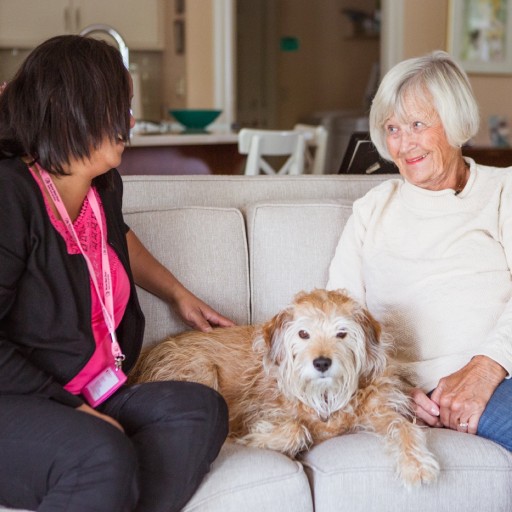What to do When Your Auto Insurance Claim is Denied?
Weighing the Pros and Cons: Using a Personal Loan to Tackle Credit Card Debt.
What You Need to Know About Secured Credit Card Deposits!
About Balance Transfer Basics!
What do you Know About Credit Scores!
Insuring Your Peace of Mind: An Overview of Common Types of Insurance.
Aging in place is the top choice for many seniors. Multiple surveys conducted over years have shown that most adults want to stay in their homes as they age. But let’s be real, staying put isn’t always possible. Some homes have stairs or other features that can complicate life for older adults.
Handling these tricky layouts can be a challenge for anyone, especially seniors. In other words, while aging in place sounds lovely, it’s not one-size-fits-all. Finding solutions to make homes safer and more accessible is key for those who want to stay in their beloved spaces.
Plan ahead for healthy aging.
Since old age is something everybody has to face, it is important to adequately plan for the day when your body will wear out biologically. For instance, James Bowdler, founder of PrimeCarers, says that “you shouldn’t make big changes if they’re really not needed; you should break them down into smaller changes that you do little by little.”
It is advisable to contact a geriatric care manager or a care coordinator first. These professionals can complete a home safety assessment and senior living assessment right on your property.
They can also provide other assistance, such as:
●Provide advice on safety modifications that should be made to the house.
●Provide a list of local resources oriented toward seniors’ needs.
●Create an individualized care strategy based on the preferences of the person.
●Serve as a resource for the community when any difficult circumstances arise.
Taking these proactive steps can make all the difference in ensuring a safer and more comfortable aging experience.

Eradicate hazards for safe aging.
Safety always comes first when we talk about creating an environment for seniors. “Seniors often are not as mobile, or physically agile, and have poorer basic senses,” states Diana Melichar, a LEED architect as well as an interior designer.
These are some of the modifications you can do:
●Clear obstacles to allow unobstructed movement in the room.
●Eliminate loose area rugs that are an accident waiting to happen.
●Use carpets and rugs with low profile to minimize tripping hazards.
●Make use of carpets, ensuring that there are no loose edges.
●Use brighter lights, such as LED bulbs, to increase the amount of light one has.
These modest considerations can make a huge impact when creating an environment for seniors to live in.
Eliminate stairs for easy living.
Stairs can be a real pain, literally. Many older adults find them tough to handle, especially if they have achy knees and hips. While you might not be able to remove all the stairs without packing up and moving, consider aiming for single-floor living.
Bathroom improvements
Bathrooms are like slippery little devils. Ron Shimek, president of Mr. Handyman, emphasizes the need for modifications. “Support and firmer footing are essential,” he notes.
Here are some bathroom upgrades to consider for seniors:
●Nonslip shower floors to keep those feet steady.
●Grab bars in the shower and next to toilets for a steady grip.
●Raised toilets for easier sitting and standing.
●Walk-in tubs to eliminate risky climbs.
●Seats or padded benches in the shower for a comfy break.

Smart home modifications for aging in place
Making your home safer is essential for comfortable aging in place. Here are some practical modifications to consider:
●Move kitchen appliances
Relocating kitchen appliances to waist height reduces the risk of injury. Seniors often find it hard to reach overhead. Countertop appliances are easier to access. Lowering counters and cabinets is also beneficial for wheelchair users.
●Swap out doorknobs
For seniors with arthritis, small movements can be painful. Upgrade to lever-style door handles makes it easier to open doors. This change enhances independence and reduces strain on hands and wrists.
●Widen doorways
Standard doorways may be too narrow for walkers and wheelchairs. Mobility challenges often arise with aging. Narrow doorways can cause frustration and isolation. Widening doorways requires a contractor experienced in aging-in-place modifications. This investment greatly improves long-term accessibility.
●Add ramps
Ramps make it easier to enter the home, especially for those using walkers or wheelchairs. Steps can be a significant barrier limiting mobility.
Ramps help eliminate these obstacles and promote independence. They also ensure smoother transitions between different flooring levels, reducing trip risks. It's crucial to have ramps installed by licensed professionals for safety.

Lighten up and smarten up your space.
Many homes are lacking in adequate lighting. This can be a real challenge for seniors whose vision isn’t what it used to be. So, let’s brighten things up!
Here are some clever strategies to improve lighting around the house:
●Install Motion-Sensing Nightlights: Place them near the bed and bathroom. They make those midnight bathroom trips much safer.
●Add Task Lighting: Bedside and floor lamps can brighten those dark corners.
●Clear the Clutter: Cover or move power cords out of the way. Nobody wants a trip hazard lurking around!
●Install ambient lighting: Recessed lights can create a warm glow that’s inviting and functional.
●Upgrade Light Switches: Swap conventional toggle switches for paddle switches. They can be operated with just a touch, making them easier to use.
Integrate smart devices
Embrace technology with smart devices! Smart appliances and intelligent lighting can make aging in place a breeze. Control your lighting, temperature, and other comforts with a simple click or a voice command on your smartphone. These modifications not only enhance safety and accessibility but also add a touch of modern flair to your home!
Remember, aging in place is the best option for many people, and this requires the home to be comfortable for seniors. Staying at home longer helps seniors stay connected. It lets them keep ties to their community, friends, and loved ones. They can hold on to memories and emotional bonds with their home.
By taking note of the changes you need to make as mentioned above, you are well on your way to extend your time at home indefinitely. The number one reason most seniors choose to age in place is maintaining independence.